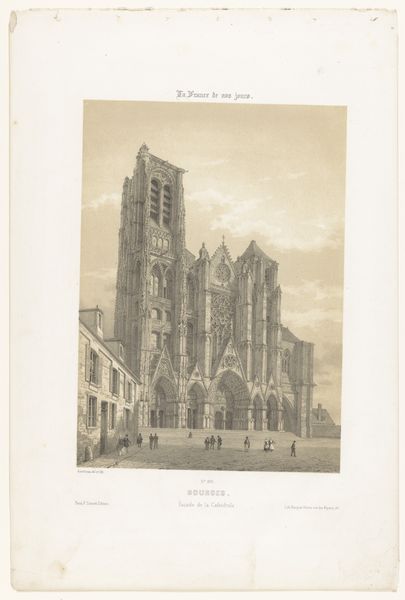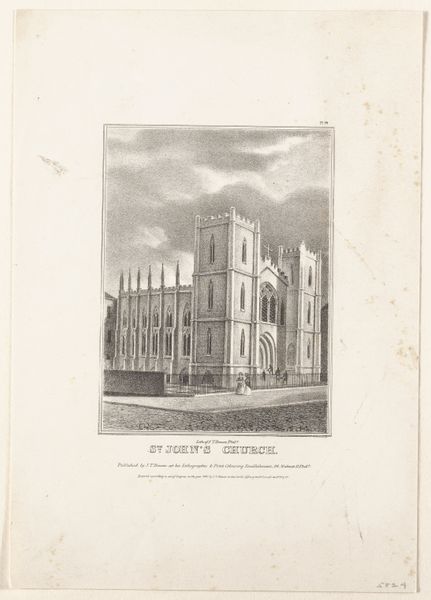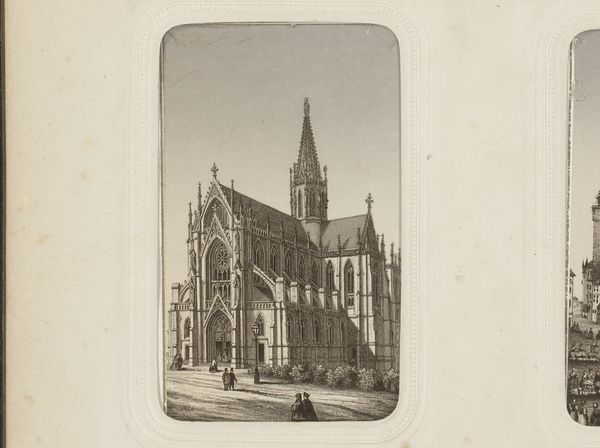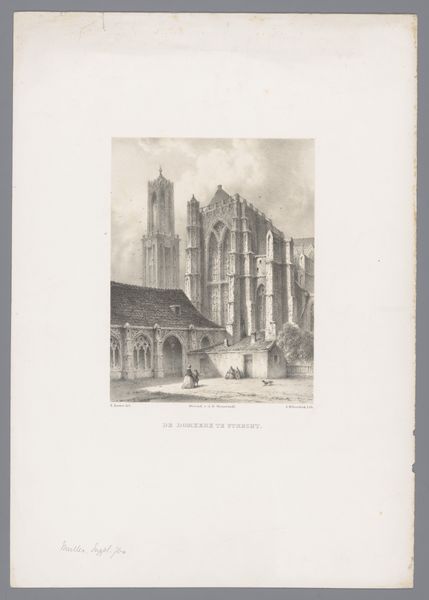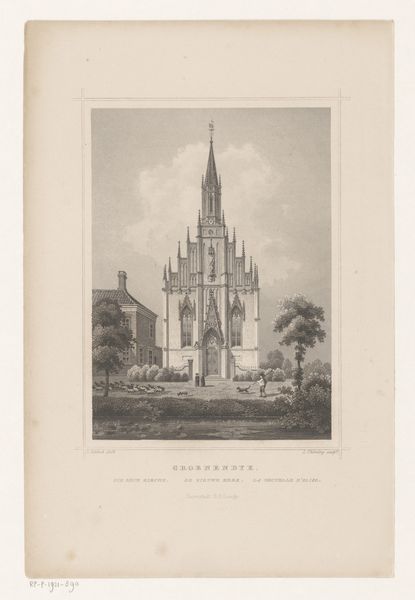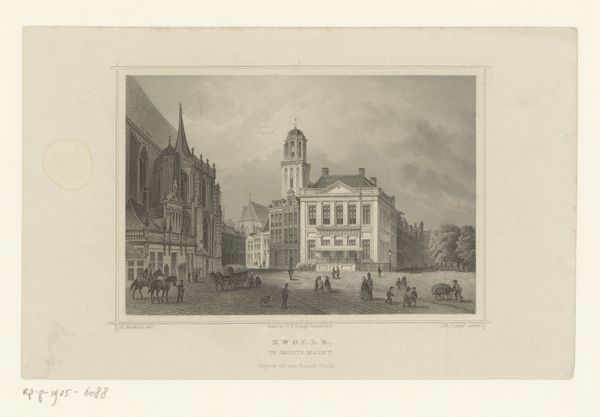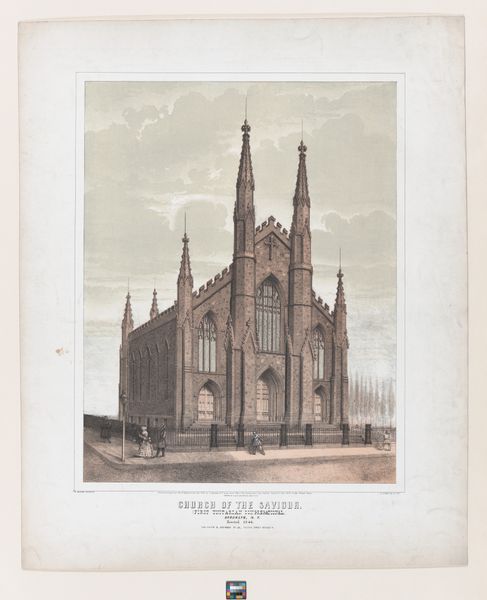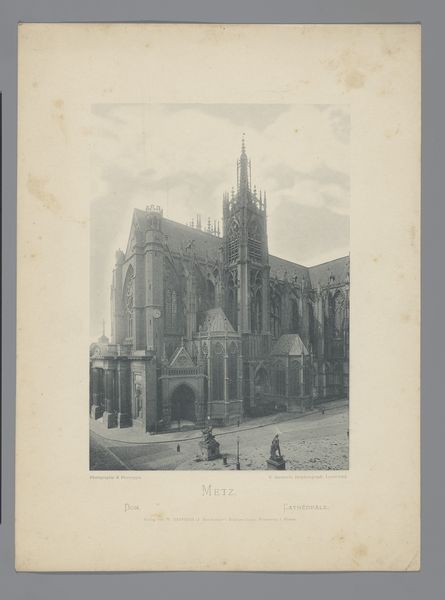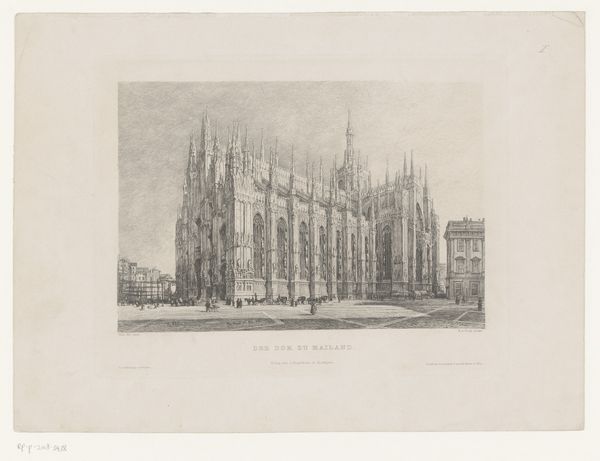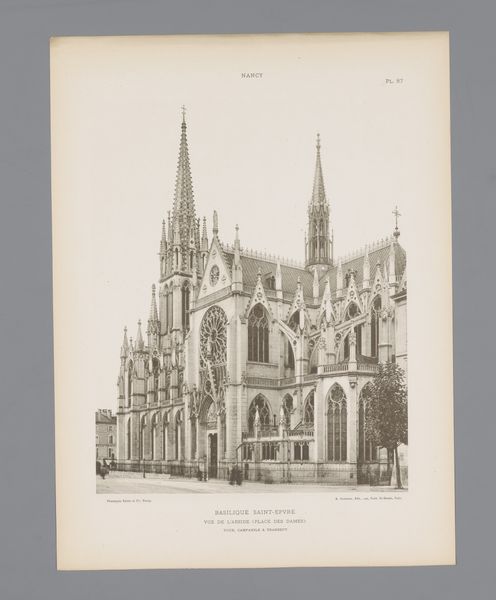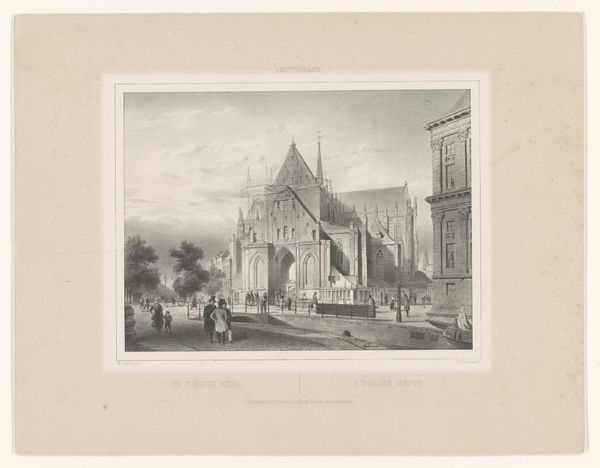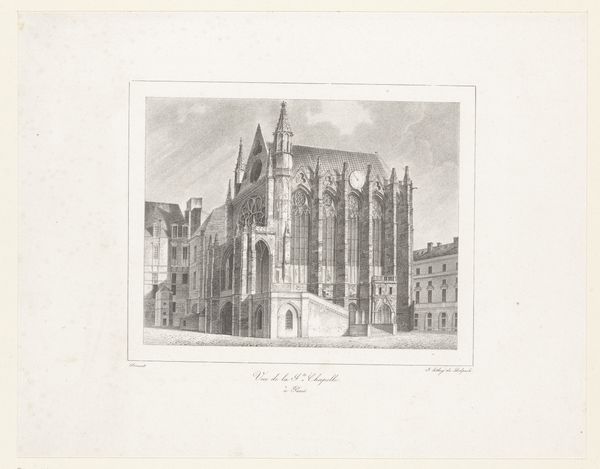
print, engraving, architecture
# print
#
landscape
#
romanticism
#
line
#
cityscape
#
engraving
#
architecture
#
realism
Dimensions: height 228 mm, width 293 mm
Copyright: Rijks Museum: Open Domain
Curator: Here we have Bernhard Grueber’s "Gezicht op de façade van de Dom in Regensburg," dating from sometime between 1816 and 1882. It's an engraving, rendered in a meticulously detailed linear style. Editor: The sheer scale of the cathedral is what strikes me first. Despite the diminutive figures populating the foreground, the imposing architecture practically dwarfs them. It exudes a sense of awe, almost bordering on the spiritual. Curator: It’s interesting you mention that. Representations of religious architecture during the Romantic era served less as simple documentation and more as symbols of cultural and spiritual identity. These buildings represented continuity with the past and a source of shared cultural memory. Editor: Yes, exactly! Cathedrals themselves often become symbols loaded with meaning over the centuries. I'm curious about Grueber's intent. What specific iconographic elements was he trying to emphasize here? Look at the repetition of the pointed arches, a distinct Gothic element which is deeply embedded in the symbolism of aspiration, striving for connection with the divine. Curator: The revival of interest in Gothic architecture during this period—the early to mid-19th century—is also no accident. Following periods of political upheaval like the Napoleonic era, there was a turn to visual languages evoking established power structures and order. Think about the role of institutions such as the church as an ideological anchor during periods of radical social change. Editor: That makes complete sense. It underscores how visual forms can carry political meaning that shift and change depending on how we see the context surrounding them. The enduring power of the imagery continues even now! Curator: Agreed. By emphasizing its monumental nature and architectural detail, Grueber has left us with a rich document and testament to the intersection of faith, politics and artistic expression in 19th century Europe. Editor: For me, thinking about the lasting power of symbolic architectural elements leaves me hoping our contemporary built environments become rich in iconic, enduring meanings too.
Comments
No comments
Be the first to comment and join the conversation on the ultimate creative platform.
